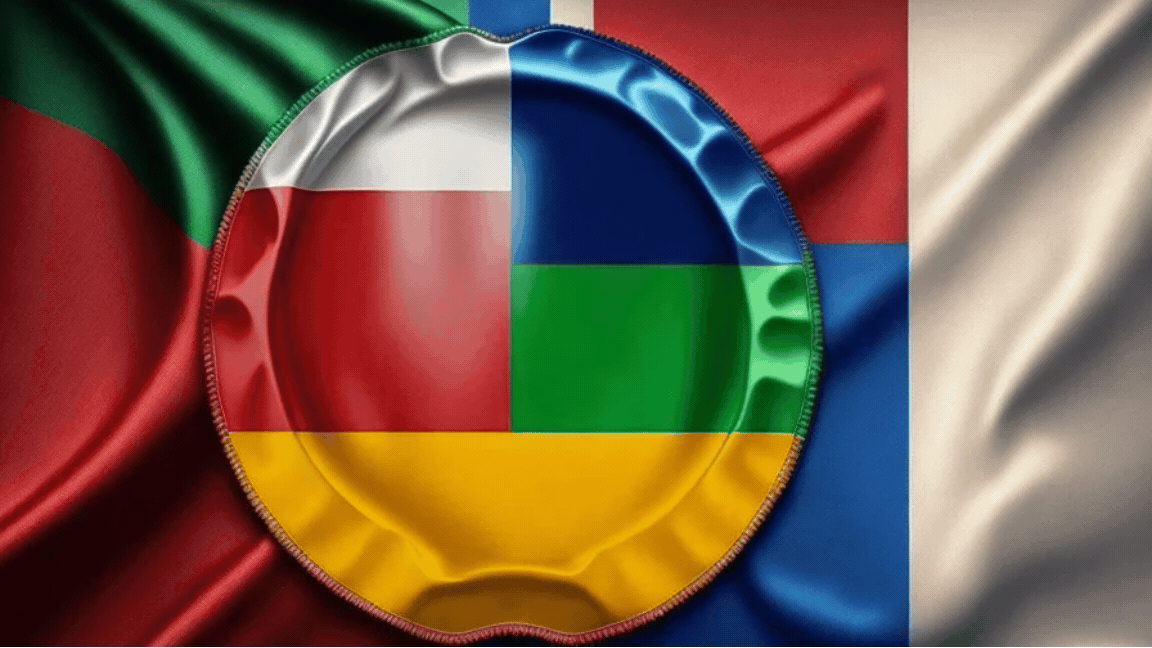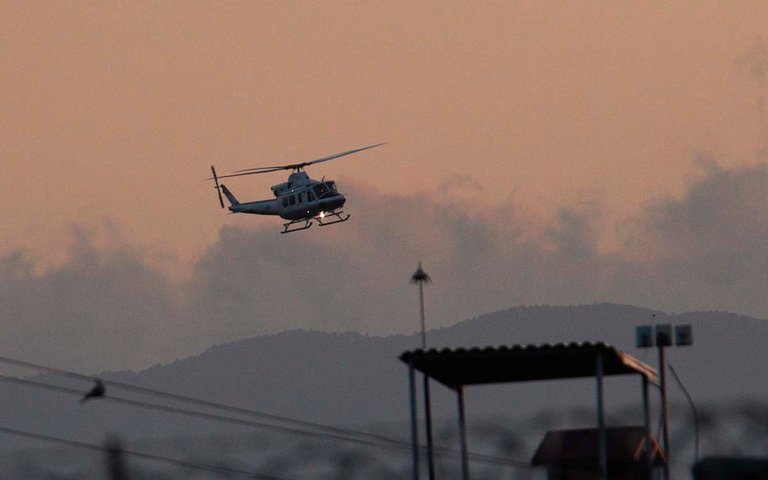The Latin American Report # 211

Good things happen in our region, for sure. However, over time, this informative effort has tended to put the spotlight on those areas of our societies that suffer from terrible scourges such as poverty and violence, fundamentally. At one moment I included here many financial notes via Reuters, and, as those who follow me since the beginning will remember, I always commented on how the main currencies of the region had closed against the dollar. For example, in other circumstances, it would be fine to share this article from EFE on the potential of the US-Mexico partnership to "explore opportunities in the semiconductor value chain", an area in which there is a veiled reference to China. Or this one, also from EFE, which informs us that last year Costa Rica approached 4 billion dollars in foreign direct investment, a record, with 7 out of every 10 dollars coming from the United States.
But considering that the time we can devote to these issues is extremely limited for those participating in their discussion—creators as well as consumers—it seems more urgent, if we are going to talk about Costa Rica, for example, to concentrate on how this foreign investment constituted an indirect source at least to supply the increasingly meager budget dedicated to education. Or how it contributes to reducing poverty, which affects 2 out of every 10 Costa Rican households, and in particular the extreme variant, which last year comprised nearly 113,000 households. The shortcomings of the once outstanding Central American educational system and poverty drag many young people into the networks of organized crime, which so feeds on a social crisis that is becoming entrenched and threatens to become structural. One of the rudest nonsense I have ever seen in my life is that of an education minister applauding the cut in investment in her portfolio, discussing constitutional consensuses that set a minimum reference value in this regard. These are things that are happening, and whose treatment I will continue to prioritize. There is no choice but to problematize society.
A Peruvian cartoon
Looking at Peru, we could take the positive projection offered by the Government of the "raided" Dina Boluarte, when it says that the country "has the potential to be again the star of economic growth". But a citizen comments in the same publication that where there is insecurity there is no growth, and that in the Andean nation, criminals extort the humblest merchant. In any case, the dynamics I point to in the Peruvian scene may be loathsome to those who do not care about how their excrement is handled. It is an alternative sanitation service coordinated by Sanimas, an organization that installs "dry toilets" and then goes on to collect buckets where citizens have been collecting their feces in bags mixed with sawdust. The most terrible thing is that it is not even a service that most Peruvians in the Pamplona Alta slum can afford, as it costs about 11 dollars. The map of countries where container sanitation technology is applied is revealing. In addition to Peru, its use is also reported in Haiti, Kenya, South Africa and Madagascar.
 Source
SourceThose who cannot afford a Sanimas dry toilet "only have enough for food," says one member of the organization. Pamplona Alta residents are among those who walk hours to their jobs—to avoid spending on transportation—and eat at soup kitchens. They are of the hundreds of thousands who are either homeless or whose houses are in terrible condition. "No one is in charge of processing their feces, no one has time to do it, it is a specialized job," says Sanima's general manager, who also says that the organization's services do not stop even on holidays. In the aforementioned shantytown, of some 100,000 inhabitants and bathed by sewage from huts and pig farms, people still defecate in latrines approximately 2 meters deep, which makes the environment foul with a stench that does not abate. One retired military man tells AP that his family raises cats to take care of the rats that always enjoy the fetid surroundings. Latrines are also the source of a vicious circle of urinary infections that attack precisely those who cannot afford a mere visit to the urologist, and also expose people to possible assaults, as these constructions are located far from their "homes" (there is talk of an attempted rape years ago against a girl while she was using one). So, to appeal to the popular Puerto Rican artist Resident, "This is America too".
Another weekend stained in blood
In Ecuador, hitmen kill you without confirming that you were the target of their anomie. The theory held by the authorities is that the five national tourists who were kidnapped and murdered in a savage manner last Friday would have been "mistaken" for adversaries entering the micro-trafficking market in a sector of Manabi. But if yesterday I said that this province seemed to dispute the unfortunate leadership of the also coastal Guayas as epicenter of violence, this Saturday nine murders were reported in Guayaquil. Armed subjects arrived in a vehicle and opened fire on residents of the Guasmo sector practicing volleyball, killing two of them on the spot, while seven died later in the emergency room. The authorities are working to clarify the facts, although it has been said that none of the dead had a criminal record. What is clear is that although Noboa's plan managed somehow to "contain" an organized crime that overflowed at the beginning of the year, the blood is now closer than ever to reach the Carondelet Palace, in a symbolic indictment of the ineffectiveness of his government. Also in Guayas, police seized ton and a half of cocaine this weekend.
ACTUALIZACIÓN: suman 9 los asesinados en la balacera en el Guasmo Sur, cooperativa Mariuxi Febres Cordero. Ninguna de las víctimas tenía antecedentes penales, según confirma la Policía.
— Tere Menéndez (@TMT30_) March 31, 2024
Se cae entonces la teoría de una pugna entre bandas. Aún no hay detenidos. https://t.co/QzWnTUMLFk pic.twitter.com/7gx2tSLUV6
🎥👇Conoce los detalles sobre la incautación de más de una tonelada y media de droga, en Mapasingue, #GYE.
— Policía Ecuador (@PoliciaEcuador) March 31, 2024
📰 Boletín: https://t.co/M69GjX3No6
#PlanFénixActivado#CompromisoInquebrantable pic.twitter.com/r9qiD66cPK
Colombia, Mexico
In the Colombian department of Arauca, a former local candidate was murdered after having been kidnapped. His body was abandoned on the road that connects the municipality of Curabá, in the neighboring department of Boyacá, with Saravena. Some 37 leaders have been murdered so far this year. Meanwhile, in the capital, three women and a man were found dead after being shot in an incident presumed to be related to a confrontation between criminal gangs dedicated to land invasion. Then, in Mexico, as of yesterday some 140 violent deaths were informed between Thursday and Good Friday, with more than 2,000 in the whole month, the bloodiest of the year. On Saturday night, the mayor of a municipality in the western state of Michoacán was shot together with his 14-year-old son in a restaurant in Morelia, the capital. The politician died receiving medical attention while the minor survived. The "electoral" murders totaled 50 as of March 26. Finally, following the still inconclusive case of mass kidnapping reported in Sinaloa, yesterday some 17 people were initially kidnapped in Nuevo Leon—another state crisscrossed by organized crime—and taken to the border state of Tamaulipas.
¡Más secuestros masivos en #México! 😤 En Nuevo León, un comando armado privó de su libertad a varias personas; se trata de, al menos, 13 víctimas
— adn40 (@adn40) March 30, 2024
Acompaña a @TaniaGomezMx y @ohernandezb en #AdnConmigo por 👉 https://t.co/MSrQwruYky pic.twitter.com/MgHuWOPGxP
 Aerial patrol in Tamaulipas (source).
Aerial patrol in Tamaulipas (source).

As I have previously made my views known regarding prohibition that fuels the violence and corruption plaguing the Americas, I will not further remark here on that solution. The Sanima service for the ~100,000 people is ~$1M/mth (if I understand properly). This is very inexpensive for preventing potable water from being tainted with sewage, and could be a source of valuable fertilizer if properly composted after collection, which I assume is the reason it is collected in sawdust.
It is difficult to fund ~$12M/year for services to the poor, but the cost of pestilence untreated sewage extorts from the nation is almost certainly more, and the potential of sales of fertilizer (while almost certainly figured into the monthly fee already) may offset such expense if not already reckoned. While water based sewage systems have proved to massively improve the health of communities availed them for centuries, Sanima's service is well able to provide those same health benefits without tainting potable water supplies, which are increasingly expensive and in decreasing supply.
For many centuries landowners along busy routes competed to provide latrines that attracted travelers so they would be the beneficiaries of the deposits of valuable fertilizer, prior to the introduction of water sewerage systems. Such sewerage systems transformed valuable fertilizer into dangerous toxic waste, however, which turned out to be an economic drain and threat to the environment downstream. Composting is a far more economically viable technology IMHO, with comparable health benefits for communities that must provide sewer services, and potable water, to their populations.
Perhaps wealthy patrons needing fertilizer for their agricultural holdings might compete for the resource by providing safe and clean latrines for people were governments not in the way of people providing themselves solutions to their problems.
Thanks!
It appears that they are not taking advantage of this potential. In the source article is stated that Sanima moves 40 tons of waste weekly to a landfill. It would really be very positive if some of the alternatives you suggest could be achieved (as win-win solutions), despite they arise from the neglect and lack of protection to which the residents of Pamplona Alta are condemned. I even think of Cuba, where in the area where my mother-in-law lives there are still many people using latrines, while the country succumbs to the lack of fertilizers for agriculture. Here is a report on a project in the direction you suggested a few years ago, in Haiti.
The history and context you provided are not a mere add-on, but form an extraordinary content in itself. Thank you again for your always helpful feedback.
Sanima just dumping that waste at a landfill is a terrible practice, adding to the leachate burden landfills produce that can negatively impact the environment. A bit of open land where they could compost the fertilizer would likely reduce their costs operating the landfill, or paying to dump there, while producing a valuable product.
Sometimes I really don't understand how governments get their mandates. That in Peru seems to be completely divorced from economic reality.